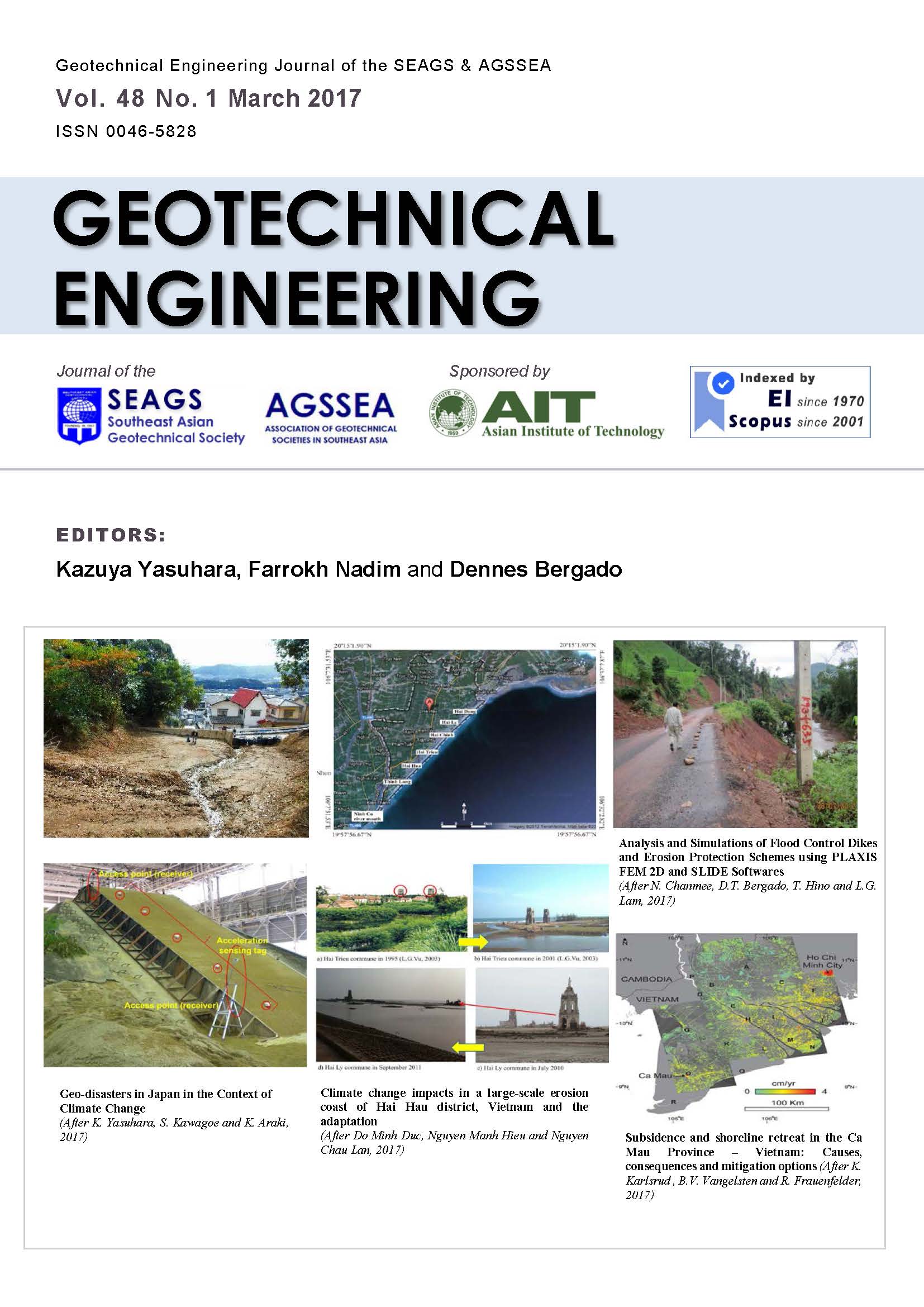Arresting rainfall-induced red soil run off in a farmland by inhibitory adaptation measures
Main Article Content
Abstract
Climate change-induced red soil erosion in Okinawa of Japan has become widely recognized due to the increased frequencies of heavy rainfall. Approximately 85% of runoff from farmland is accounted as a source of the red soil erosion. In this study, field experimental plots were conducted in Ginoza village in Okinawa to investigate the effectiveness of potential adaptation measures in arresting the red soil erosion. A physical model for estimating a sediment volume of soil erosion was derived based on grain size distribution. The maximum particle sizes were derived as a function of rainfall intensity, initial soil conditions and strength parameters of the surface soil. The measured maximum particle sizes of the discharged red soil were agreed well with the model results and could offer the basis for determining an appropriate method of adaptation based on geotechnical aspect.
Article Details

This work is licensed under a Creative Commons Attribution-NonCommercial-NoDerivatives 4.0 International License.
Copyright © 2019 Association of Geotechnical Societies in Southeast Asia (AGSSEA) - Southeast Asian Geotechnical Society (SEAGS).


